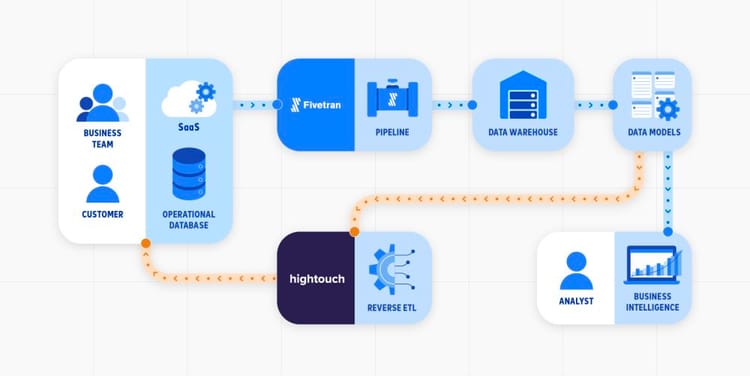Why did I leave IT services? and why I do not regret it.

Understanding business is now becoming a key for most data & technology roles
A lot of people talk about business people being data-driven and AI literate. However, I believe the more important issue is that data professionals need to become business-savvy.
In my experience, the number one cause of data project failures is a lack of understanding of the business.
The need to get business savvy has become even more pronounced in the era of AI-assisted coding and reduced infrastructure complexity due to the cloud.
Technical expertise is becoming commoditized, making it imperative for data engineers and data scientists to learn about the business to stay relevant.
This realization is what led me to leave IT consultancy and join a business organization as a data leader.
I have learned in the last 8 months, since leaving IT services, is that to be an outstanding data & AI leader, you should have a better holistic understanding of the business than most executives in that organization.
Most departments work in silos, and if you are to be a breaker of these silos with connected data, it's logical that you understand the business holistically.

How Data Professionals Can Become Business-Fluent?
I grappled with this issue since I started working with fashion retail companies, I learned it the hard way. Here are some lessons I learned along the way:
Engage with Business Teams:
Initiate Conversations: Regularly meet with various business teams to understand their processes, pain points, and goals. This will help you see the bigger picture and understand how data can support their objectives.
Shadow Business Operations: Spend time shadowing business operations to get a firsthand understanding of how things work. This immersion can provide valuable insights into the daily challenges and workflows.
Research Your Industry:
Stay Informed: Conduct thorough research on industry trends, common practices, and challenges. Subscribe to industry publications, and large consulting companies, attend conferences, and follow thought leaders.
Industry Leaders Analysis: Study competitors/industry leaders to understand what they are doing well and where they are struggling. This can provide context for your data projects and help identify opportunities for improvement. Do not look only at the same industry, also look at adjacent industries.
I have seen that one idea very common in one industry is considered revolutionary in another industry. This cross-pollination is great for innovation.
Participate in Company Initiatives:
Join Cross-Functional Projects: Volunteer to be part of cross-functional projects. This exposure will help you see how different parts of the business interact and rely on data.
Be humble and try to stay silent unless you have some thing valuable to add.
Contribute to Strategic Planning: Get involved in strategic planning sessions to understand the company's long-term goals and how data can play a role in achieving them.
Learn Business Concepts:
Take Courses and Workshops: Enroll in courses or workshops on business fundamentals, finance, marketing, and operations. This knowledge will improve your ability to translate data insights into business strategies.
If you are a student enroll in double degree programs.
Use Business Terminology: Familiarize yourself with business terminology to improve your communication with business stakeholders. This will help bridge the gap between data and business.
Business-Oriented Onboarding: Ensure each team member goes through business-oriented onboarding to understand specific areas of the business. This foundational knowledge will enhance their ability to contribute effectively.
Align Data Projects with Business Goals:
Understand Business KPIs: Learn about the key performance indicators (KPIs) that drive the business. Ensure your data projects are designed to impact these KPIs positively. There are two types of metrics output metrics and controllable input metrics. You should develop a sense of both. Normally data innitives come from improving or monitoring new controllable input metrics.
If you are into data transformation, I strongly recommend you read Working Backwards: Insights, Stories, and Secrets from Inside Amazon. This helped me earn a lot of respect from fallow business leaders.
Focus on Impact: Always ask how your data projects can directly support the business’s strategic objectives. Prioritize projects that have the potential for the highest business impact.
Go Full Stack Technically: I encourage team members to become full-stack technically, which reduces coordination overhead and allows them to own end-to-end initiatives. This approach fosters a deeper understanding of both technical and business aspects of projects.
Act as a Liaison:
Facilitate Communication: Bridge the gap between business and data by facilitating communication. Ensure that both sides understand each other’s needs and capabilities.
Build Relationships: Develop strong relationships with business leaders to become a trusted advisor. This will increase your influence and ability to drive data-driven decisions.
By following these steps, you can become more business fluent, create more impactful data solutions, foster better collaboration with business teams, and ultimately drive the company’s success.






Member discussion